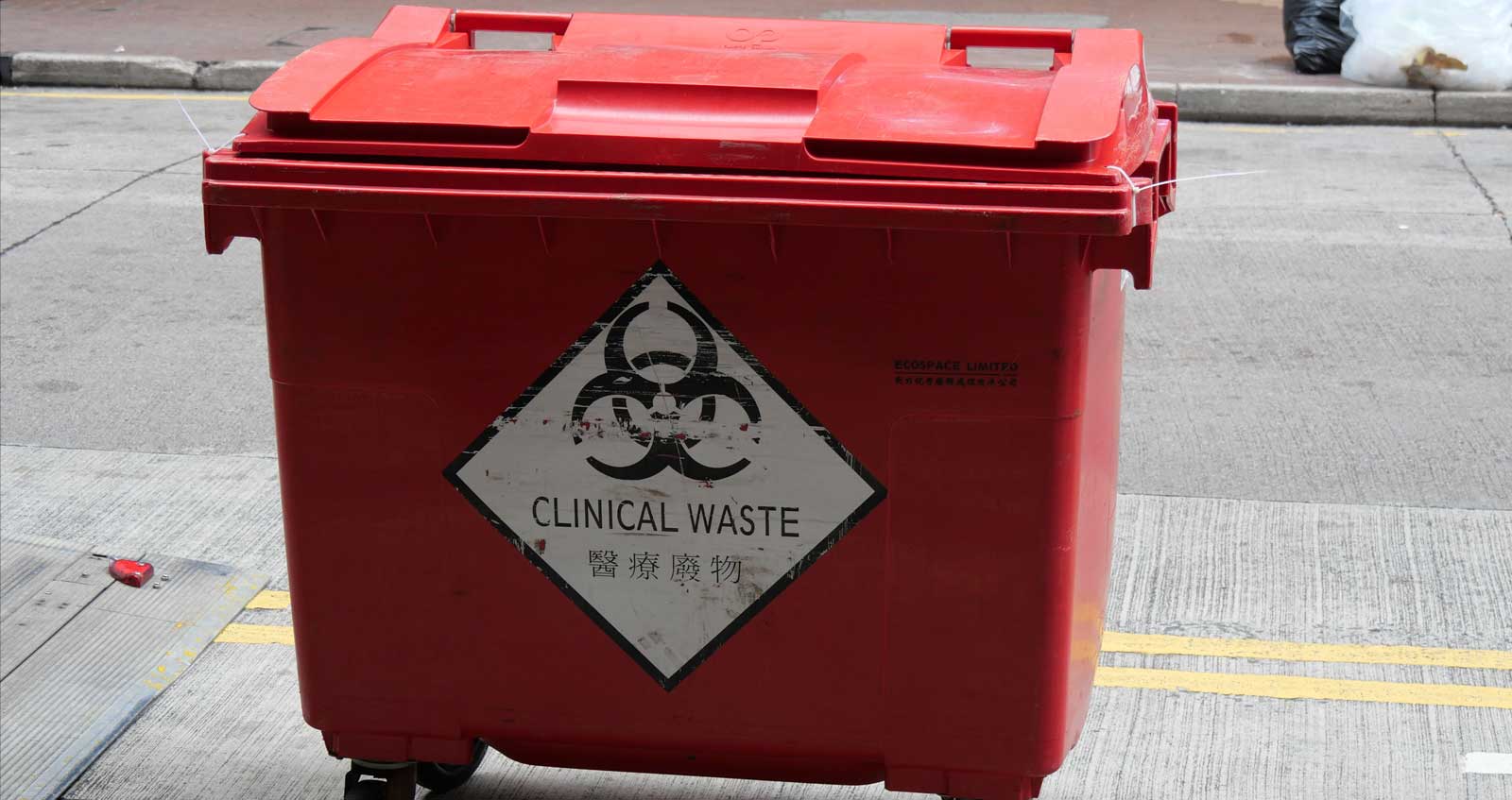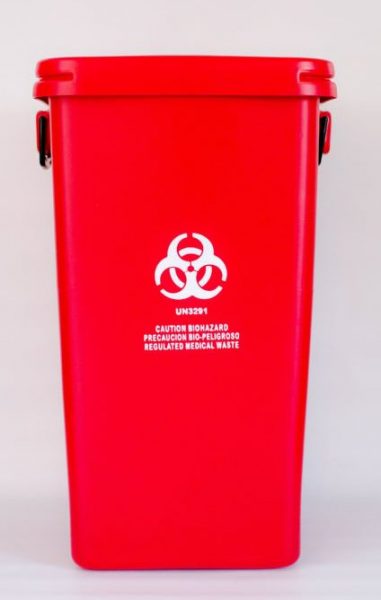Safeguarding Wellness: Unveiling the Significance of Expert Medical Waste Removal
Safeguarding Wellness: Unveiling the Significance of Expert Medical Waste Removal
Blog Article
Remain Ahead of Rules: Specialist Guidance on Medical Waste Disposal
In a world where the health care market is constantly evolving, it is vital for medical centers to remain ahead of laws when it comes to the appropriate disposal of medical waste. From recognizing the different categories of clinical waste to executing the appropriate collection and partition methods, this conversation will give useful insights and workable tips to help centers stay ahead of regulations in the ever-changing landscape of medical waste disposal.
Recognizing Medical Waste Categories
Recognizing medical waste groups is vital for proper disposal and administration in healthcare centers. Medical waste describes any waste produced by medical care activities that might position a hazard to public health and wellness or the setting. It is important to categorize medical waste properly to guarantee its safe handling, therapy, transportation, and disposal.
There are a number of groups of medical waste that medical care facilities require to be acquainted with. One of the most usual categories include transmittable waste, pathological waste, sharps waste, pharmaceutical waste, and chemical waste. Each category has particular standards and laws for its proper administration and disposal.
Pathological waste refers to human tissues, organs, or body parts that call for unique handling and disposal. Drug waste makes up ended, unused, or contaminated drugs that require mindful handling and disposal.
Remaining Up-To-Date With Regulatory Modifications
Staying current with governing adjustments is essential for healthcare centers to make certain conformity and appropriate management of medical waste disposal. medical waste removal. With laws regularly progressing, it is vital for healthcare centers to stay up-to-date to stay clear of charges, fines, and possible damage to the environment and public wellness
To stay in advance of regulative changes, medical care facilities need to develop a system for monitoring and monitoring updates. This can be done by subscribing to governing newsletters, participating in seminars and workshops, and actively joining market organizations. Furthermore, centers ought to mark an employee or group in charge of remaining educated and disseminating info to pertinent stakeholders.
Normal communication with governing companies is additionally important. Medical care centers ought to develop relationships with regional, state, and government agencies to ensure they know any modifications in regulations that may affect their waste monitoring practices. This can be done with normal meetings, participation in public remark durations, and aggressive engagement with regulative firms.
In addition, health care centers ought to consider partnering with waste administration companies that focus on clinical waste disposal (medical waste disposal services with WasteX). These firms are often skilled in the most current laws and can provide assistance and support to make sure conformity
Applying Correct Collection and Partition Techniques
To properly take care of clinical garbage disposal, medical care centers have to develop correct collection and partition approaches based on regulative standards. Carrying out these techniques makes sure the risk-free handling and disposal of potentially dangerous materials, protects the environment, and decreases the threat of injuries and infections to medical care employees and the general public.
Proper collection and segregation approaches entail using assigned containers and labeling systems. Healthcare centers must offer clearly classified containers for different sorts of medical waste, such as sharps, transmittable waste, pharmaceutical waste, and non-hazardous waste. These containers must be color-coded and plainly marked to avoid confusion and advertise simple identification.
Furthermore, healthcare centers should educate their personnel on the More about the author right procedures for accumulating and setting apart medical waste. This consists of informing them on the different types of waste, the ideal containers to utilize, and the value of following regulations and standards. Regular training sessions and correspondence course need to be carried out to ensure that employee continue to be up-to-date on ideal practices.
In addition, health care centers ought to develop a system for routine collection and disposal of clinical waste. This may include partnering with licensed waste administration companies that focus on clinical waste disposal. These business will certainly guarantee that the accumulated waste is carried and dealt with in conformity with governing requirements.
Selecting the Right Disposal Methods

Incineration is among one of the most typical and efficient approaches for getting rid of particular kinds of clinical waste, such as pathological waste and sharps. It entails the regulated burning of waste at heats, minimizing it to ash. Nonetheless, incineration can launch harmful pollutants into the air and add to air contamination.

Other disposal approaches include chemical therapy, microwave treatment, and landfilling. Chemical therapy includes making use of chemicals to neutralize the waste and decontaminate. Microwave treatment makes use of microwave energy to warmth and disinfect the waste. Landfilling includes burying the waste in an assigned landfill location (medical waste disposal services with WasteX). Nevertheless, landfilling needs to be the last option because of the prospective threat of contamination to soil and groundwater.
Making Sure Conformity Through Documentation and Training
After very carefully considering the proper disposal approaches for clinical waste, medical care centers need to make certain conformity with guidelines and lessen environmental effect by executing reliable documents and training treatments. This step is essential in maintaining a lasting and risk-free atmosphere for both health care workers and the public.

Medical care employees who manage clinical waste needs to get proper training on waste partition, managing, and disposal procedures. By supplying comprehensive training, healthcare facilities can equip their team to make educated choices and minimize the risk of incorrect waste disposal.
Conclusion
Finally, remaining ahead of policies in medical waste disposal is critical for healthcare facilities. medical waste removal services. Recognizing the various groups of clinical waste, staying updated with governing modifications, executing proper collection and partition techniques, selecting the appropriate disposal approaches, and making certain compliance through documents and training are all necessary steps. By adhering to these standards, healthcare companies can successfully dispose and take care of of medical waste in a safe and liable way
From understanding the various categories of clinical waste to executing the appropriate collection and segregation approaches, this discussion will certainly offer beneficial insights and workable tips to aid centers stay ahead of laws in the ever-changing landscape of medical waste disposal. - medical waste disposal services with WasteX
The most common categories consist of transmittable waste, Continued pathological waste, sharps waste, pharmaceutical waste, and chemical waste. Health care centers need to give clearly labeled containers for different types of medical waste, such as sharps, infectious waste, pharmaceutical waste, and non-hazardous waste. Healthcare facilities must establish a detailed system to tape-record and track all elements of clinical waste disposal, including types of waste created, amounts, and disposal techniques used. Healthcare workers who handle medical waste needs to obtain ideal training on waste partition, taking care of, and disposal treatments.
Report this page